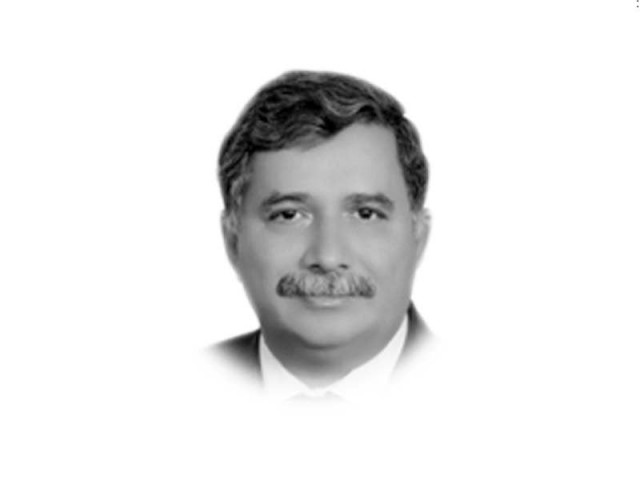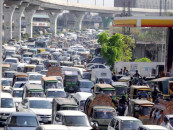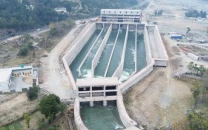Rising violence
The year 2024 witnessed an alarming surge in violence, making it the bloodiest in nine years.

As the developed world welcomed the New Year with jubilant celebrations and hopes for a brighter tomorrow, Pakistan closed 2024 with a somber reality - escalating violence and terrorism.
The year ended with brazen attacks by terrorists on Pakistani security forces near the Afghanistan border, claiming the lives of several soldiers. The retaliatory airstrikes by Pakistan resulted in 44 fatalities. Meanwhile, the Afghan government, through militant proxies, targeted border areas of Pakistan, and viral social media videos depicted the occupation of an outpost in Bajaur District.
Adding to the chaos, the reported visit of Pakistan's spy chief to Tajikistan sparked speculations about the occupation of the Wakhan Corridor and alleged support for the Afghan National Resistance Movement. These developments placed Pakistan under global scrutiny while significantly heightening security challenges.
The year 2024 witnessed an alarming surge in violence, making it the bloodiest in nine years. Violent non-state actors, ranging from insurgents to sectarian groups, unleashed a wave of terror across Pakistan.
According to reports, 685 security personnel were martyred in 444 terrorist attacks, contributing to an overall death toll of 1,612. This marks a 73% increase compared to the 934 militants eliminated during the year.
The geographical distribution of violence paints a grim picture. Although terrorist incidents were recorded across all four provinces and the federal capital, over 95% were concentrated in Khyber-Pakhtunkhwa and Balochistan.
Khyber-Pakhtunkhwa bore the brunt of terrorist activity, with 295 attacks, including five sectarian incidents, resulting in 509 fatalities and 517 injuries. Compared to 2023, the province witnessed a 69% increase in attacks and a 21% rise in fatalities. Sectarian violence in Khyber-Pakhtunkhwa's Kurram tribal district proved particularly devastating, leaving 182 dead and 234 injured.
Balochistan experienced a staggering 119% increase in attacks by groups like the Balochistan Liberation Army (BLA) and the Balochistan Liberation Front (BLF). The province reported 202 terrorist incidents, marking an 84% rise from 2023, with 322 fatalities and 534 injuries.
Across Pakistan, a total of 670 terrorist incidents were reported in 2024. Counter-terrorism operations claimed the lives of 212 militants, while security personnel continued to pay a heavy price - 204 police officers were martyred, and 383 were injured.
According to think-tank data, violence-linked fatalities in 2024 totaled 2,546, with 2,267 injuries. These figures represent a 66% increase in fatalities and a 55% rise in injuries compared to 2023. The surge in violence - 49% more incidents than in the previous year - underscores the deteriorating security landscape.
Military operations intensified in response. The ISPR reported 59,775 counter-terrorism operations, during which 925 terrorists were killed. Despite these efforts, 383 security personnel were martyred. The year's fatalities reached a nine-year high, surpassing figures from 2016 and approaching levels last seen in 2015.
The alarming escalation in violence since 2021 highlights deep-rooted issues that remain unaddressed. While the state's kinetic approach - embodied by operations like Zarb-e-Azb and Radd-ul-Fasaad - brought temporary relief, the underlying causes of terrorism persist. The absence of the rule of law and lack of institutional coordination continue to impede long-term progress.
Independent sources report that southern districts have increasingly fallen under the control of militant organisations, with growing activity from Al-Qaeda and the Islamic State of Khorasan (IS-K). The recent abduction of 17 employees of a sensitive organisation in Lakki Marwat exemplifies the deteriorating security situation in these areas.
Police stations, the primary responders with a presence across the country, remain sidelined, as the Counter-Terrorism Department (CTD) bears the burden of combating militancy. However, the CTD's limited resources and reactive approach hinder its effectiveness. Besides other factors, this disconnect has allowed militant groups to regain a foothold in several areas, particularly in southern Khyber-Pakhtunkhwa.
The resurgence of militant networks in border areas poses a significant challenge to the writ of the state. These networks thrive in ungoverned spaces, using them to organise and plan attacks. Without swift action, Pakistan risks sliding back into the pre-2014 era, marked by atrocities like the Army Public School attack.
Despite the significant reduction in terrorism since 2014, the gains of past operations are now eroding. The failure to implement the National Action Plan (NAP) in its entirety has provided militants with the space to regroup. Of the 20 points outlined in NAP, many remain unaddressed, leaving critical vulnerabilities unmitigated.
The most effective strategy involves denying militants social and physical space. This requires the comprehensive implementation of NAP, encompassing measures like:
Strengthening the rule of law and governance.
Enhancing coordination between law enforcement and intelligence agencies.
Empowering police stations to act as proactive agents of counter-terrorism.
Reviving educational and socio-economic development programmes in conflict-affected areas.
The year 2024 serves as a stark reminder of the persistent threat posed by terrorism in Pakistan. The escalating violence has not only claimed countless lives but also tarnished the country's global image. The time for reactive measures is over. To restore peace and stability, Pakistan must adopt a holistic approach that addresses both the symptoms and root causes of militancy. Only by implementing a robust, coordinated and long-term strategy can the nation hope to overcome this growing menace.













COMMENTS (2)
Comments are moderated and generally will be posted if they are on-topic and not abusive.
For more information, please see our Comments FAQ